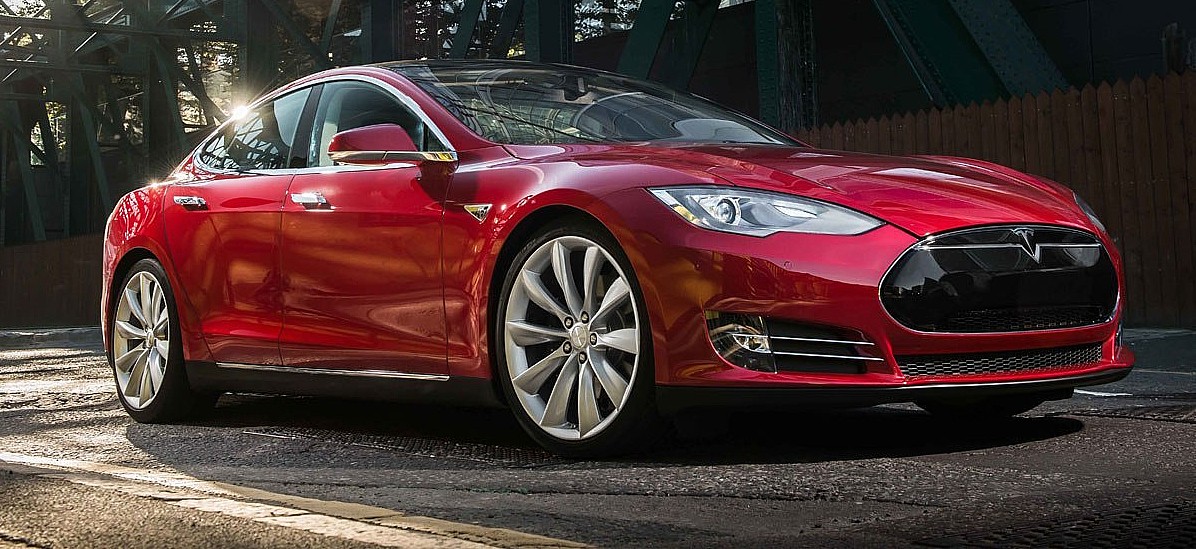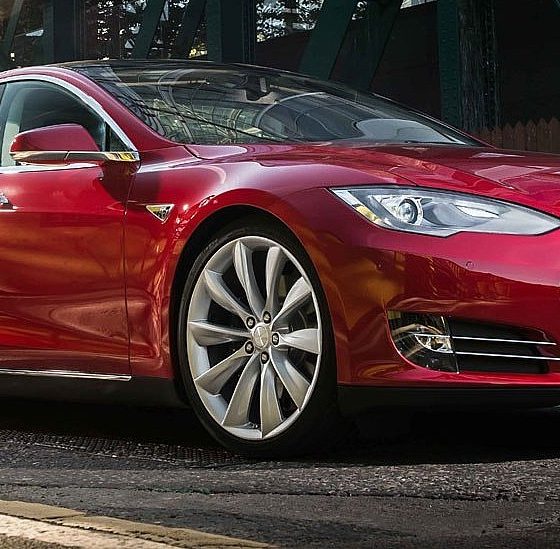

News
Tesla Model S beats 70 years of motoring legends to win MotorTrend’s Ultimate Car of the Year award
After seven years in the market, multiple awards, and establishing itself as the undisputed king of premium electric sedans, the Tesla Model S has earned what could very well be its most impressive award to date. Just recently, the Model S, the first vehicle designed from the ground up by Tesla, was dubbed by MotorTrend as its Ultimate Car of the Year, beating 70 years worth of motoring legends in the process.
MotorTrend started its Car of the Year awards in 1949, which was won by Cadillac. Over the years, the publication’s Car of the Year award would expand to several segments such as Imports, Trucks, and SUVs. Despite this, each winner of the esteemed award had one thing in common: each vehicle scored very well under the publication’s six criteria — Advancement in Design, Engineering Excellence, Efficiency, Performance of Intended Function, Value, and Safety.
With MotorTrend celebrating its 70th anniversary, the publication opted to do something special this year. Ninety-two vehicles have received the Car of the Year award to date, but as mentioned by the publication in an announcement, one of these 92 vehicles is more significant than the others. From this 92, eight finalists were selected, corresponding to every decade that the publication has been active. These vehicles are the 1949 Cadillac lineup, the 1955 Chevrolet lineup, the 1968 Pontiac GTO, the 1972 Citroën SM, the 1986 Mazda RX-7, the 1996 Dodge Caravan, the 2004 Toyota Prius, and the 2013 Tesla Model S.

While the 2010-2020 decade is not over yet, it is difficult to argue that the most essential car of recent years is the Tesla Model S. Created as a successor to the original Tesla Roadster and designed to prove that all-electric cars can be viable (and even superior) alternatives to gas and diesel-powered sedans, the Model S was a groundbreaking vehicle from the inside out. The sedan’s production ramp experienced some delays considering Tesla’s inexperience (the company had only been producing the low-volume Roadsters when the Model S came out), but when it did, it shook the auto industry to its core.
MotorTrend calls the Model S as a “rolling manifesto,” a car that personifies CEO Elon Musk’s view of electric vehicles as tomorrow’s form of transportation. Even before its insanely quick configurations were released, the original Model S proved enough to disrupt the luxury sedan segment. Thanks to its rear-mounted electric motor, it was quick off the line, hitting 0-60 mph in 4.0 seconds, it seated seven (two in jump seats), and it was also incredibly efficient. What’s more, it had 265 miles of range per charge, showing the auto industry that electric cars can go the distance too, literally. These, together with the vehicle’s never-before-seen tech, ultimately helped the Model S become MotorTrend’s 2013 Car of the Year.
The Model S is more than a great electric car. Rather, it is an excellent vehicle that just happens to be electric. Bold and progressive, Tesla’s flagship sedan still stands as the gold standard that competing EVs today are still benchmarked against. Constantly evolving thanks to free, over-the-air updates from Tesla, the Model S also stands as one of the only vehicles released this decade that actually becomes better with age. For MotorTrend, these characteristics make the Model S deserving of the Ultimate Car of the Year award, perhaps even more.
“No vehicle we’ve awarded, be it Car of the Year, Import Car of the Year, SUV of the Year, or Truck of the Year, can equal the impact, performance, and engineering excellence that is our Ultimate Car of the Year winner, the 2013 Tesla Model S,” the publication wrote.
MotorTrend’s feature on the Tesla Model S as a finalist in its Ultimate Car of the Year awards could be accessed here. The final results of the awards could be accessed here.
The Tesla Model S’ Ultimate Car of the Year award comes just a day after its smaller sibling, the Model 3, was deemed as the 2019 Car of the Year and 2019 Premium Electric Car of the Year by AutoExpress UK. Just like its larger sibling, the Model 3 was granted the accolade for its perfect blend of technology and driving dynamics, making the car that a likely disruptor in the auto industry, but in a much bigger scale.

News
Nvidia CEO Jensen Huang explains difference between Tesla FSD and Alpamayo
“Tesla’s FSD stack is completely world-class,” the Nvidia CEO said.

NVIDIA CEO Jensen Huang has offered high praise for Tesla’s Full Self-Driving (FSD) system during a Q&A at CES 2026, calling it “world-class” and “state-of-the-art” in design, training, and performance.
More importantly, he also shared some insights about the key differences between FSD and Nvidia’s recently announced Alpamayo system.
Jensen Huang’s praise for Tesla FSD
Nvidia made headlines at CES following its announcement of Alpamayo, which uses artificial intelligence to accelerate the development of autonomous driving solutions. Due to its focus on AI, many started speculating that Alpamayo would be a direct rival to FSD. This was somewhat addressed by Elon Musk, who predicted that “they will find that it’s easy to get to 99% and then super hard to solve the long tail of the distribution.”
During his Q&A, Nvidia CEO Jensen Huang was asked about the difference between FSD and Alpamayo. His response was extensive:
“Tesla’s FSD stack is completely world-class. They’ve been working on it for quite some time. It’s world-class not only in the number of miles it’s accumulated, but in the way it’s designed, the way they do training, data collection, curation, synthetic data generation, and all of their simulation technologies.
“Of course, the latest generation is end-to-end Full Self-Driving—meaning it’s one large model trained end to end. And so… Elon’s AD system is, in every way, 100% state-of-the-art. I’m really quite impressed by the technology. I have it, and I drive it in our house, and it works incredibly well,” the Nvidia CEO said.
Nvidia’s platform approach vs Tesla’s integration
Huang also stated that Nvidia’s Alpamayo system was built around a fundamentally different philosophy from Tesla’s. Rather than developing self-driving cars itself, Nvidia supplies the full autonomous technology stack for other companies to use.
“Nvidia doesn’t build self-driving cars. We build the full stack so others can,” Huang said, explaining that Nvidia provides separate systems for training, simulation, and in-vehicle computing, all supported by shared software.
He added that customers can adopt as much or as little of the platform as they need, noting that Nvidia works across the industry, including with Tesla on training systems and companies like Waymo, XPeng, and Nuro on vehicle computing.
“So our system is really quite pervasive because we’re a technology platform provider. That’s the primary difference. There’s no question in our mind that, of the billion cars on the road today, in another 10 years’ time, hundreds of millions of them will have great autonomous capability. This is likely one of the largest, fastest-growing technology industries over the next decade.”
He also emphasized Nvidia’s open approach, saying the company open-sources its models and helps partners train their own systems. “We’re not a self-driving car company. We’re enabling the autonomous industry,” Huang said.
Elon Musk
Elon Musk confirms xAI’s purchase of five 380 MW natural gas turbines
The deal, which was confirmed by Musk on X, highlights xAI’s effort to aggressively scale its operations.

xAI, Elon Musk’s artificial intelligence startup, has purchased five additional 380 MW natural gas turbines from South Korea’s Doosan Enerbility to power its growing supercomputer clusters.
The deal, which was confirmed by Musk on X, highlights xAI’s effort to aggressively scale its operations.
xAI’s turbine deal details
News of xAI’s new turbines was shared on social media platform X, with user @SemiAnalysis_ stating that the turbines were produced by South Korea’s Doosan Enerbility. As noted in an Asian Business Daily report, Doosan Enerbility announced last October that it signed a contract to supply two 380 MW gas turbines for a major U.S. tech company. Doosan later noted in December that it secured an order for three more 380 MW gas turbines.
As per the X user, the gas turbines would power an additional 600,000+ GB200 NVL72 equivalent size cluster. This should make xAI’s facilities among the largest in the world. In a reply, Elon Musk confirmed that xAI did purchase the turbines. “True,” Musk wrote in a post on X.
xAI’s ambitions
Recent reports have indicated that xAI closed an upsized $20 billion Series E funding round, exceeding the initial $15 billion target to fuel rapid infrastructure scaling and AI product development. The funding, as per the AI startup, “will accelerate our world-leading infrastructure buildout, enable the rapid development and deployment of transformative AI products.”
The company also teased the rollout of its upcoming frontier AI model. “Looking ahead, Grok 5 is currently in training, and we are focused on launching innovative new consumer and enterprise products that harness the power of Grok, Colossus, and 𝕏 to transform how we live, work, and play,” xAI wrote in a post on its website.
Elon Musk
Elon Musk’s xAI closes upsized $20B Series E funding round
xAI announced the investment round in a post on its official website.

xAI has closed an upsized $20 billion Series E funding round, exceeding the initial $15 billion target to fuel rapid infrastructure scaling and AI product development.
xAI announced the investment round in a post on its official website.
A $20 billion Series E round
As noted by the artificial intelligence startup in its post, the Series E funding round attracted a diverse group of investors, including Valor Equity Partners, Stepstone Group, Fidelity Management & Research Company, Qatar Investment Authority, MGX, and Baron Capital Group, among others.
Strategic partners NVIDIA and Cisco Investments also continued support for building the world’s largest GPU clusters.
As xAI stated, “This financing will accelerate our world-leading infrastructure buildout, enable the rapid development and deployment of transformative AI products reaching billions of users, and fuel groundbreaking research advancing xAI’s core mission: Understanding the Universe.”
xAI’s core mission
Th Series E funding builds on xAI’s previous rounds, powering Grok advancements and massive compute expansions like the Memphis supercluster. The upsized demand reflects growing recognition of xAI’s potential in frontier AI.
xAI also highlighted several of its breakthroughs in 2025, from the buildout of Colossus I and II, which ended with over 1 million H100 GPU equivalents, and the rollout of the Grok 4 Series, Grok Voice, and Grok Imagine, among others. The company also confirmed that work is already underway to train the flagship large language model’s next iteration, Grok 5.
“Looking ahead, Grok 5 is currently in training, and we are focused on launching innovative new consumer and enterprise products that harness the power of Grok, Colossus, and 𝕏 to transform how we live, work, and play,” xAI wrote.








